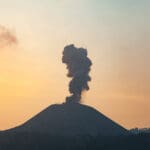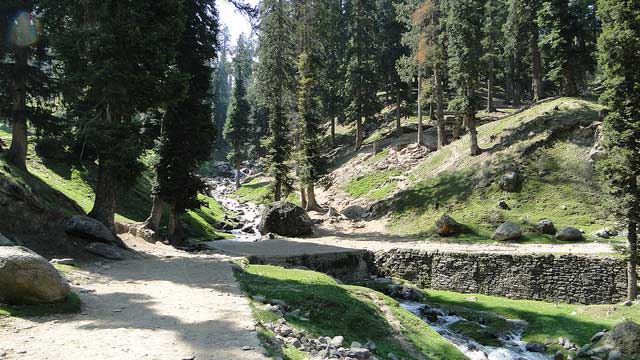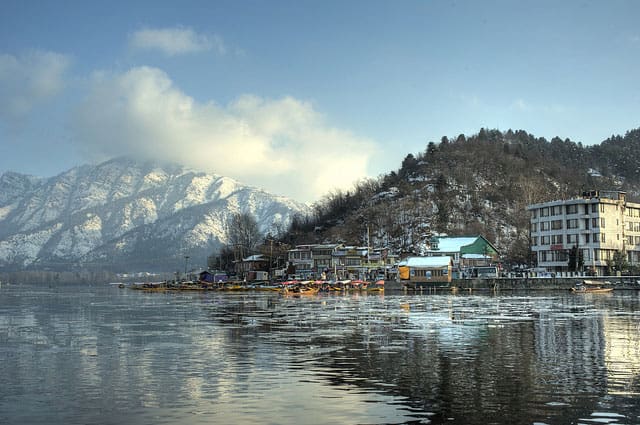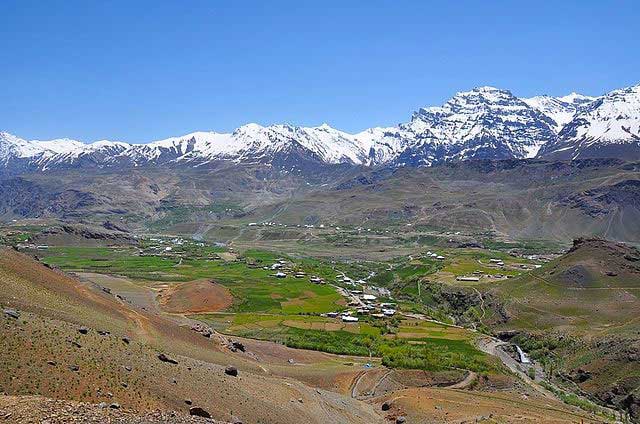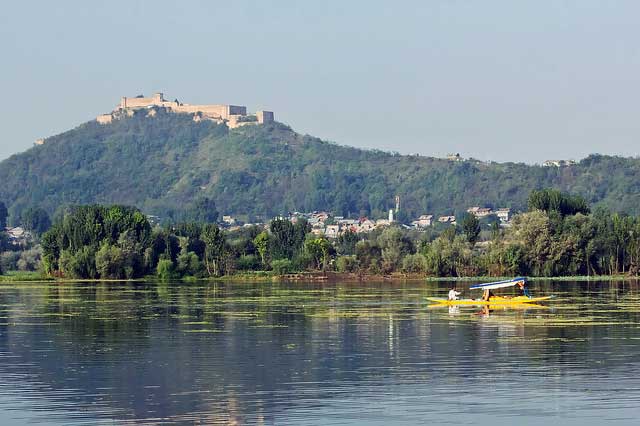Katra, nestled at the foothills of the majestic Trikuta Mountains in Jammu and Kashmir, is a destination that seamlessly blends spirituality, natural beauty, and cultural richness. Known as the gateway to the revered Vaishno Devi Temple, this town attracts millions of pilgrims and tourists from across the globe every year. However, Katra is much more than just a religious hub. It offers a plethora of attractions that cater to diverse interests, making it an ideal destination for travelers seeking both serenity and adventure. In this comprehensive guide, we will explore the top 5 places to visit in Katra , delving into their historical significance, architectural marvels, scenic beauty, and spiritual essence.
1. Vaishno Devi Temple: The Spiritual Epicenter
The Legend and Significance
The Vaishno Devi Temple is not just a religious site but a symbol of faith and devotion for millions of Hindus worldwide. Perched at an altitude of approximately 5,200 feet above sea level, the temple is dedicated to Goddess Vaishnavi, an incarnation of Goddess Durga. According to Hindu mythology, the temple holds immense spiritual power, believed to fulfill the wishes of devotees who undertake the arduous journey to reach it.
The legend of Vaishno Devi dates back thousands of years, with ancient scriptures narrating the story of a young girl named Vaishnavi, who was an incarnation of Goddess Durga. She meditated on the Trikuta Mountains to attain enlightenment and eventually merged with the divine. Her abode became the sacred shrine visited by millions today. Pilgrims believe that visiting the temple brings blessings, prosperity, and liberation from worldly troubles.
The Pilgrimage Experience
The journey to the temple begins in Katra, where pilgrims gather to embark on a trek spanning approximately 13 kilometers. The path is steep and challenging, yet it is lined with numerous stalls offering refreshments, souvenirs, and spiritual guidance. For those unable to walk, options such as helicopter services and palanquins are available, ensuring accessibility for all. Along the way, pilgrims encounter several sacred spots, including Bhairon Nath Temple and Charan Paduka , each adding layers of spiritual significance to the pilgrimage.
The trek itself is a transformative experience, allowing pilgrims to connect deeply with their faith. The rhythmic chanting of “Jai Mata Di” echoes through the mountains, creating an atmosphere of unity and devotion. Many pilgrims describe the journey as a metaphorical ascent toward self-realization and inner peace.
Architectural Marvels
The temple itself is a masterpiece of ancient architecture, featuring intricate carvings and sculptures that narrate tales of devotion and divine intervention. The sanctum sanctorum houses three natural rock formations, known as Pindies , representing the goddess in her three forms: Mahakali, Mahalakshmi, and Mahasaraswati. The aura of the temple is palpable, with the continuous chanting of hymns and the fragrance of incense creating an atmosphere of profound spirituality.
The temple complex also includes several smaller shrines, meditation halls, and prayer rooms. Every corner of the premises exudes divinity, inviting visitors to immerse themselves in prayer and reflection. The architecture reflects a harmonious blend of traditional and modern elements, ensuring comfort for pilgrims while preserving the sanctity of the space.
Tips for Visitors
- Best Time to Visit : The months of March to June and September to November offer pleasant weather, making the trek comfortable.
- Essential Preparations : Carry comfortable footwear, sufficient water, and light snacks. Dress modestly and respect local customs.
- Accommodation : Numerous guesthouses and hotels in Katra cater to pilgrims, ranging from budget-friendly to luxury options.
- Health Considerations : If you have any medical conditions, consult a doctor before embarking on the trek. Carry necessary medications and inform your companions about your health status.
- Photography Restrictions : Photography is prohibited inside the main temple premises. Respect this rule to maintain the sanctity of the site.
2. Banganga River: A Sacred Oasis
Historical and Religious Importance
The Banganga River , located near Katra, holds immense religious significance. It is believed to have originated from the arrow of Lord Rama, who shot it to quench the thirst of his army during the epic battle of Ramayana. This mythological connection makes the river a revered site for pilgrims and history enthusiasts alike.
According to folklore, Lord Rama, accompanied by Lakshmana and Sita, stopped near Katra during their exile. When the army accompanying them grew thirsty, Lord Rama used his divine powers to summon the river by shooting an arrow into the ground. The water that emerged formed the Banganga River, which continues to flow to this day. This story adds a layer of mysticism to the site, drawing devotees who seek blessings and purification.
Natural Beauty and Serenity
Surrounded by lush greenery and towering mountains, the Banganga River offers a tranquil escape from the hustle and bustle of daily life. The crystal-clear waters reflect the azure sky, creating a picturesque setting perfect for meditation and introspection. Several small temples dot the riverbanks, adding to the spiritual ambiance.
The river is flanked by dense forests teeming with wildlife, making it an ideal spot for nature lovers. Birdwatchers can spot species such as kingfishers, herons, and eagles, while the surrounding hills are home to leopards, deer, and other animals. The biodiversity of the region enhances its appeal, offering visitors a chance to reconnect with nature.
Activities and Attractions
Visitors can enjoy a leisurely stroll along the riverbank or take a dip in its holy waters, believed to cleanse sins and bestow blessings. The area also serves as a starting point for treks to nearby hills, offering breathtaking views of the surrounding landscape. During festivals like Navratri, the riverbank transforms into a vibrant hub of activity, with devotees performing rituals and celebrating with music and dance.
For photography enthusiasts, the river provides endless opportunities to capture stunning images. The interplay of light and shadow on the water, combined with the backdrop of the mountains, creates a visual feast.
Visitor Guidelines
- Respect the Environment : Avoid littering and maintain the sanctity of the river.
- Photography : While photography is allowed, be mindful of capturing images of individuals without their consent.
- Safety Precautions : Be cautious when venturing near the riverbanks, as the terrain can be slippery, especially after rainfall.
3. Trikuta Mountains: A Haven for Adventure Enthusiasts
Geographical Significance
The Trikuta Mountains , forming the backdrop of Katra, are a paradise for nature lovers and adventure seekers. These mountains are part of the larger Himalayan range and are renowned for their rugged terrain, dense forests, and panoramic vistas. Spanning an area of over 200 square kilometers, the Trikuta range offers a diverse ecosystem that supports a wide variety of flora and fauna.
The name “Trikuta” translates to “three peaks,” referring to the three prominent summits that dominate the skyline. Each peak has its own unique charm and significance, attracting trekkers, photographers, and spiritual seekers alike. The highest peak, known as Vaishno Devi Peak , stands at an elevation of 5,200 feet and serves as the final destination for pilgrims visiting the Vaishno Devi Temple.
Trekking and Hiking Opportunities
The region offers numerous trekking trails catering to different skill levels. From easy walks through pine forests to challenging ascents requiring technical expertise, there is something for everyone. Popular routes include the trek to Adhkuwari Cave , a significant stop on the Vaishno Devi pilgrimage, and the ascent to Chandanwari , a scenic meadow surrounded by snow-capped peaks.
The Adhkuwari Cave, located midway on the Vaishno Devi trek, is a natural limestone formation believed to be the place where Goddess Vaishnavi meditated for nine months. Pilgrims often pause here to offer prayers and seek blessings before continuing their journey. Chandanwari, on the other hand, is a popular base camp for trekkers and adventurers. Its lush meadows and cool climate make it an ideal spot for camping and picnicking.
For experienced trekkers, the Trikuta Summit Trek offers a thrilling challenge. The trail winds through dense forests, rocky terrains, and narrow ridges, providing breathtaking views of the surrounding valleys and peaks. The sense of accomplishment upon reaching the summit is unparalleled, as it rewards hikers with panoramic vistas stretching as far as the eye can see.
Wildlife and Flora
The Trikuta Mountains are home to diverse flora and fauna, including rare species of birds, mammals, and plants. Visitors may spot leopards, Himalayan black bears, and various bird species during their explorations. The region’s biodiversity adds an element of excitement and discovery to every trek.
The forests are predominantly composed of pine, oak, and cedar trees, providing a habitat for numerous animal species. During spring, the slopes are adorned with wildflowers such as rhododendrons, primulas, and orchids, creating a riot of colors. The changing seasons bring new wonders, from the vibrant blooms of summer to the snow-covered landscapes of winter.
Safety Tips
- Guided Tours : Opt for guided treks to ensure safety and gain insights into the local ecosystem.
- Weather Preparedness : Carry appropriate gear, including warm clothing and rain protection, as weather conditions can change rapidly.
- Hydration and Nutrition : Stay hydrated and carry energy-rich snacks to maintain stamina during long treks.
- Emergency Contacts : Keep a list of emergency contacts and inform someone about your itinerary before heading out.
4. Baba Dhansar: A Hidden Gem
Cultural and Historical Context
Located approximately 20 kilometers from Katra, Baba Dhansar is a lesser-known yet equally captivating destination. The site is named after Baba Dhansar, a revered saint whose shrine attracts devotees seeking blessings and solace. According to local legends, Baba Dhansar was a sage who meditated in the caves near the waterfall, attaining enlightenment and leaving behind a legacy of wisdom and compassion.
The shrine is a simple yet powerful structure, built around the cave where Baba Dhansar is believed to have resided. Pilgrims often tie threads on the sacred tree near the shrine, symbolizing their prayers and wishes. The serene environment and mystical aura make it a popular destination for those seeking spiritual rejuvenation.
Scenic Splendor
The highlight of Baba Dhansar is the stunning waterfall cascading down the rocky cliffs. Surrounded by verdant forests and misty mountains, the waterfall creates a mesmerizing spectacle, especially during the monsoon season when the flow is at its peak. The sound of gushing water combined with the chirping of birds creates a symphony of nature that soothes the soul.
The waterfall is accessible via a short trek through the forest, allowing visitors to immerse themselves in the tranquility of the surroundings. The cool spray of water and the fresh mountain air provide a refreshing break from the heat of the plains. Many visitors choose to sit by the waterfall, meditating or simply enjoying the beauty of nature.
Spiritual Retreat
The shrine of Baba Dhansar is a place of quiet reflection and prayer. Devotees often perform rituals and offer prayers here, believing that the saint’s blessings bring prosperity and peace. The serene environment makes it an ideal spot for meditation and self-discovery. Local priests are available to guide visitors through the rituals and share stories about Baba Dhansar’s life and teachings.
During festivals like Maha Shivaratri and Navratri, the shrine becomes a focal point of celebration. Devotees gather to chant mantras, sing bhajans (devotional songs), and participate in communal feasts. The sense of community and shared devotion adds to the charm of the place.
Visitor Information
- Accessibility : The site is accessible via road, with regular buses and taxis available from Katra.
- Facilities : Basic amenities such as restrooms and food stalls are available, though visitors are encouraged to carry their own supplies.
- Timing : The shrine and waterfall are open throughout the year, but the best time to visit is during the monsoon season when the waterfall is most spectacular.
5. Patnitop: A Hill Station Paradise
Overview of Patnitop
Located about 80 kilometers from Katra, Patnitop is a popular hill station known for its pristine beauty and cool climate. Nestled amidst the Shivalik Range, Patnitop offers a refreshing retreat for those looking to escape the summer heat or simply enjoy a peaceful vacation. At an elevation of approximately 6,500 feet, the hill station boasts panoramic views of the surrounding valleys and peaks.
Patnitop’s charm lies in its unspoiled natural beauty and laid-back vibe. Unlike other commercialized hill stations, Patnitop retains a rustic charm that appeals to travelers seeking authenticity and simplicity. The rolling meadows, dense forests, and winding trails create a serene environment perfect for relaxation and rejuvenation.
Adventure Activities
Patnitop is a hub for adventure sports, including paragliding, zorbing, and skiing. The Sanasar Valley , located nearby, is particularly famous for its paragliding opportunities, providing thrill-seekers with a bird’s-eye view of the breathtaking landscape. During winters, the snow-covered slopes transform into a playground for skiing enthusiasts.
Paragliding in Patnitop is an unforgettable experience, as participants soar above the valley, taking in sweeping views of the Himalayas and the Chenab River. Certified instructors ensure safety while guiding participants through the basics of flying. For those who prefer a gentler activity, zorbing involves rolling downhill inside a giant inflatable ball, offering a fun and adrenaline-pumping ride.
Skiing is another popular activity during the winter months. The slopes are well-maintained, and equipment rentals are readily available for beginners and experts alike. Skiing lessons are offered by trained professionals, ensuring a safe and enjoyable experience for all.
Nature Walks and Picnics
For those preferring a more relaxed pace, Patnitop offers numerous walking trails and picnic spots. The Nathatop Viewpoint provides panoramic views of the surrounding valleys and peaks, making it a favorite among photographers and nature lovers. The viewpoint is accessible via a short hike, allowing visitors to enjoy the fresh mountain air and stunning scenery.
The Dana Top Meadows are another must-visit destination within Patnitop. These sprawling meadows are carpeted with wildflowers during spring and summer, creating a colorful tapestry against the backdrop of the mountains. Visitors can enjoy picnics, horse rides, or simply lounge under the shade of tall pine trees.
Local Cuisine and Culture
The region is also known for its delectable local cuisine, including traditional dishes like rajma-chawal (kidney beans and rice) and kahwa (a spiced tea). Visitors can immerse themselves in the local culture by interacting with friendly villagers and participating in festivals and fairs.
During festivals like Baisakhi and Lohri, the entire region comes alive with music, dance, and traditional performances. Locals don vibrant costumes and prepare elaborate feasts, inviting visitors to join in the celebrations. These events provide a glimpse into the rich cultural heritage of the region and foster a sense of community and belonging.
Travel Tips
- Transportation : Regular buses and private taxis connect Katra to Patnitop, with travel time averaging around two hours.
- Accommodation : A range of accommodations, from budget lodges to luxury resorts, ensures a comfortable stay for all types of travelers.
- Weather Preparedness : Pack warm clothing, even during summers, as temperatures can drop significantly at higher altitudes.
- Photography Gear : Bring a good camera to capture the stunning landscapes and vibrant culture of Patnitop.
Accessibility
Reaching Katra is convenient due to its well-connected transportation network. The nearest airport is in Jammu, approximately 48 kilometers away, while Katra Railway Station serves as a major railhead. Regular bus services operate from nearby cities, ensuring seamless connectivity for pilgrims and tourists alike. Within Katra, auto-rickshaws and taxis are readily available for local transportation.
For international travelers, the closest international airport is in New Delhi, which is well-connected to Jammu via domestic flights. From Jammu, Katra can be reached by road in about an hour. Private tour operators also offer customized packages, including transportation, accommodation, and guided tours.
How to Plan Your Trip
Planning a trip to Katra requires careful consideration of factors such as weather, accommodation, and itinerary. Start by deciding the duration of your stay and identifying key attractions you wish to explore. Book accommodations in advance, especially during peak seasons, to avoid last-minute hassles. Pack essentials such as comfortable clothing, trekking gear, and personal medications to ensure a hassle-free experience.
Create a flexible itinerary that allows time for spontaneous exploration. Allocate sufficient time for the Vaishno Devi trek, as it is the highlight of any visit to Katra. Research additional activities, such as visiting Banganga River or exploring the Trikuta Mountains, to make the most of your trip. Finally, familiarize yourself with local customs and traditions to ensure respectful interactions with residents and fellow travelers.
Conclusion
Katra is a destination that offers something for everyone, whether you seek spiritual enlightenment, natural beauty, or thrilling adventures. By exploring the top 5 places to visit in Katra , you can create unforgettable memories and gain a deeper appreciation for the region’s rich heritage and vibrant culture. Whether you’re a devout pilgrim or an avid traveler, Katra promises an enriching and transformative experience.
FAQ’s with Answers
- What is the best time to visit Katra?
- The ideal time is between March and June or September and November.
- How far is Katra from Jammu?
- Katra is approximately 48 kilometers from Jammu.
- Is the Vaishno Devi trek difficult?
- The trek is moderately challenging but manageable with proper preparation.
- Are there helicopter services to Vaishno Devi?
- Yes, helicopter services are available for a fee.
- What should I carry for the Vaishno Devi trek?
- Carry water, snacks, comfortable shoes, and warm clothing.
- Can non-Hindus visit Vaishno Devi Temple?
- Yes, people of all religions are welcome.
- What is the significance of Banganga River?
- It is believed to have originated from Lord Rama’s arrow.
- Are there adventure activities in Patnitop?
- Yes, activities like paragliding and skiing are popular.
- Is Baba Dhansar suitable for families?
- Absolutely, it is a serene and family-friendly destination.
- Where can I find good food in Katra?
- Local dhabas and restaurants serve authentic Kashmiri and North Indian cuisine.




